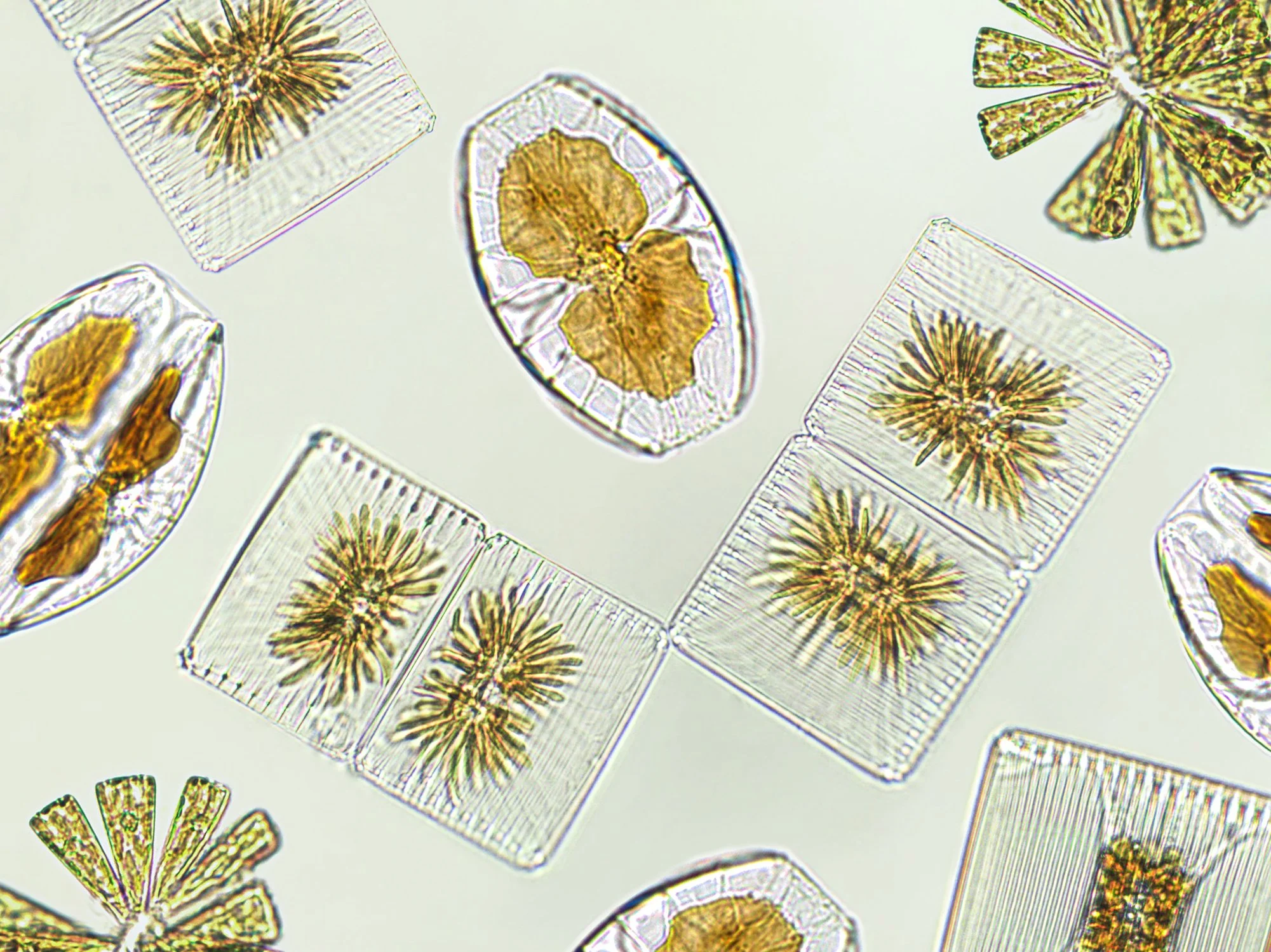What are Diatoms?
Diatoms are single-celled photosynthetic organisms encased in beautifully intricate shells made of silica (SiO₂). These shells are like glass houses—strong, porous, and artistically patterned in specific ways for each species.
They live in oceans, lakes, rivers, and even damp soils—essentially anywhere there’s moisture and light. There are tens of thousands of species, and collectively, they make up one of the largest groups of phytoplankton on Earth.
They have several roles in their ecosystems:
Photosynthesis Powerhouses
Diatoms perform about half of global photosynthesis. They convert sunlight, water, and carbon dioxide into organic matter, serving as primary producers at the foundation of aquatic ecosystems.Carbon Sequestration
When diatoms die, their heavy silica shells often sink to the ocean floor, carrying carbon with them. This process—called the biological carbon pump—helps remove CO₂ from the atmosphere and lock it away in sediments for thousands of years.Base of the Food Web
Diatoms feed countless organisms, from tiny zooplankton to large whales. Their seasonal blooms drive nutrient cycles and fishery productivity worldwide.
Indicators of Environmental Health
Because diatoms respond quickly to changes in nutrient levels, pH, or pollution, scientists use them as bioindicators to monitor water quality and ecosystem changes.
In short, diatoms are invisible giants of the biosphere, producing oxygen, regulating carbon, supporting aquatic life, and inspiring science and nano-technology with their intricate silica structures.








